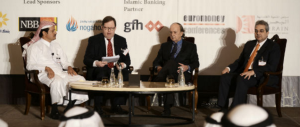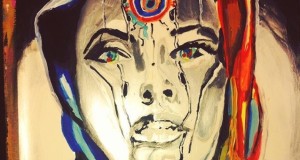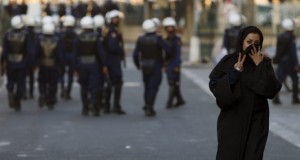In January 2015, a strange story broke about a group of American students found living in Duraz village in Bahrain. The undergrads (according to the Gulf Daily News they were between 18 and 20 years old) had come to learn Arabic and study the culture and history of Bahrain. The police questioned them over their peculiar choice of housing, and according to some they were later released and prodded to relocate to Riffa, to study the people there.
Anthropologist Henny Harald Hensen ran into few issues when she visited Bahrain in 1960 and lived in Saar for three weeks, where she studied the people there. Saar was then a small village of about 450 inhabitants, and geographically smaller than the more cosmopolitan Saar of today. It is one of the oldest inhabited locations of the island located in the west. Now inland, it was probably once on Bahrain’s sea-front, and a Dilmun-era temple is located on its outskirts.
Saar’s oldest families are all Sayyids (direct descendants of the Prophet), and indeed all the people that Henny met, who she lived with and who acted as her interpretors, were Sayyids. It was something they took great pride in.
Henny provides a snapshot of the rural life of Bahrain which has all but vanished in the 21st century. She describes, for example, the disappearing “local handicrafts”: the mat-makers of Sitra; the cotton weavers of Bani Jamra; and the potters of A’ali who used converted Dilmunian burial mounds as kilns.
On the subject of the potters, she describes the way they built these furnaces: “To make a kiln out of a burial mound a hollow is made in the top, and another in the side. The objects to be fired are placed in the upper one, while the other is filled with firewood. The fuel is dried palm leaves and used in such quantities that the dark smoke from the kilns in the burial mounds can be seen from far away like flowing black banners.”
In Saar, however, no one worked in local manufacture. All the men of Saar worked in the oil fields. The Bahrain Petroleum Company (BAPCO) offered the first modern full time employment in Bahrain, but according to Henny employment at BAPCO had a “quite unexpected effect.” At the time, BAPCO had froze the workers’ wages, and as the cost of living rose, the living standards of the whole village had “lowered alarmingly.”
The sleeping arrangements for infants reflect that low living standard. Cradles are foreign to Bahrain and need to be imported, at the time probably coming from Europe. Young “Sayed Aloy”, 22, and his wife seemed to be the only family in Saar in possession of one. The other families “wrapped their babies in long cloths and laid them on the couch of rags directly on the floor.” It was a simple way of life.
It’s an era of Bahrain’s history now gone. In the information-technology era, few of us could imagine the labourious work of the village craftsmen. Nowadays, too, most of our worldly possessions and food are imported from abroad, not processed from the neighbouring village – though back then, they were already importing some things. Henny tells us of non-perishable butter, dihn, which was imported from the Netherlands. One of Saar’s men would buy a great tin from the Manama souq, and his wife distributed it to the women of each household.
Henny witnessed a part of life common to all Muslims which is also disappearing. She was still in Saar when, on a February evening, she watched one of the village men travel up a small hill – it was one of the ancient burial mounts on the west of the village. “From this vantage point he carefully watched the setting sun in order to be able to shout as soon as he caught sight of the fine crescent of the new moon, thus heralding the beginning of the month of Ramadan.”
In Saar, Henny also witnessed the Shi’a side of Ramadan, that is, the mourning of the assassination of Imam Ali. A mulla from a neighbouring village stayed in Saar for three nights, and over the course of his stay “he would conjure up before the eyes of his audience with the poetical power of his words the whole sanguinary drama which deals with the assassination of Imam Ali.” For the Shi’a, it is a tragedy second on to the death of his son Hussein. Interestingly, Henny rates the mourning for Imam Ali as as the “most important function of the month of Ramadan” in Saar.
The village of Saar, as she found it, was on the cusp between the traditional rural Bahraini way of life, with the villagers’ lives rotating around their Shi’a Muslim faith, and the encroaching modernity, most obvious in the village’s total dependence on BAPCO for employment. Saar, writes Henny, “defended the values of religious status and was obliged to defend them in order to maintain its identity as an entity surrounded not only by representatives of the orthodox Islam, the Sunni, but also by the representatives of victorious Western industrialism.”
Thus ends Henny Harald Hansen’s Investigations in a Shi’a village in Bahrain, published by the National Museum of Denmark, Copenhagen, 1968, in its Ethnographical Series Volume 12. Her report forms an interesting snapshot of a Bahrain long gone. It was one of the earliest, if not the very first, anthropological studies of Bahraini life, and probably not the last.
There is something uncomfortable about reading a foreign anthropologist’s analysis of Bahraini life, as it feels like we are diminished to the level of an animal, to be remarked at as though in a David Attenborough wildlife documentary. Yet it also makes fascinating reading, capturing us from an angle we can never observe ourselves from.
We all like to be talked and discussed about, and Bahrain is a country which draws the fascination of many people from the outside. There is something about our little islands which capture the imagination of others, and maybe it is because Bahrain is so tiny that its people are so varied and rich in the flavour of life.
We should not discourage academics who step into our homes and try to understand us. They might just capture a snapshot of Bahrain which, just like the lives of Saar’s old villagers that must have seemed so permanent, will surely disappear one day.
 Ali Al-Jamri studied MA Near & Middle Eastern Studies at SOAS. An enthusiast in history, any time he has to spare he spends reading and writing about the blog on his blog, alialjamri.wordpress.com.
Ali Al-Jamri studied MA Near & Middle Eastern Studies at SOAS. An enthusiast in history, any time he has to spare he spends reading and writing about the blog on his blog, alialjamri.wordpress.com.
The views expressed in this article are the author’s own and do not reflect that of the Bahrain Debate’s organising body.



